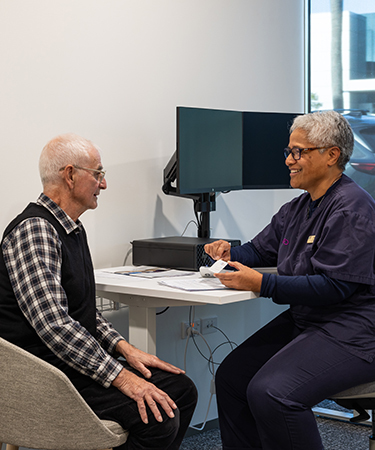Stereotactic Radiation Therapy (SRT/SABR/SBRT)

Stereo means three dimensional (3D) and tactic means to probe. This non-invasive technique delivers a high dose of radiation using many beams or arcs, to well-defined tumours.
Stereotactic radiation requires highly complex planning and image guidance technologies. Stereotactic radiation combines patient immobilisation systems like BodyFIX® with six degree treatment couch movement and image guidance, to treat patients with millimetre-scale precision.
The ability to deliver high doses of radiation means treatment can be finished in days instead of weeks. ARO has invested in CyberKnife, a radiation therapy machine used for advanced stereotactic treatments.
SRT
This is the term used when stereotactic radiation is used to treat small brain tumours that are either malignant or benign. They are often deep within the brain or tumours that cannot be removed surgically because doing so would damage too much normal brain tissue. This innovative treatment is less invasive than surgery, and may become more applicable to a broader range of benign conditions. This technology was made available, in part, by a donation from the Angela d'Audney foundation.
Stereotactic ablative radiation therapy (SABR)
This is the term used when stereotactic radiation is being used to treat areas of the body other than the brain. It can also be referred to as SBRT (stereotactic body radiation therapy). SABR is typically used to treat small, early-stage tumours of the lung, isolated recurrences from certain types of cancer and metastatic cancers in the lung, liver, adrenal glands, pancreas, lymph nodes and bones.
To learn more please read Dr Louis Lao about SABR and its uses and benefits (article on page 11 of this publication).

Understanding Your Treatment
The Patient Pathway
We understand you may be anxious about having radiation therapy. Read about the patient pathway and what to expect before, during and after radiation therapy treatment. At ARO we work closely with your radiation oncologist to develop an individualised treatment plan for each patient.
Explore the patient pathway




